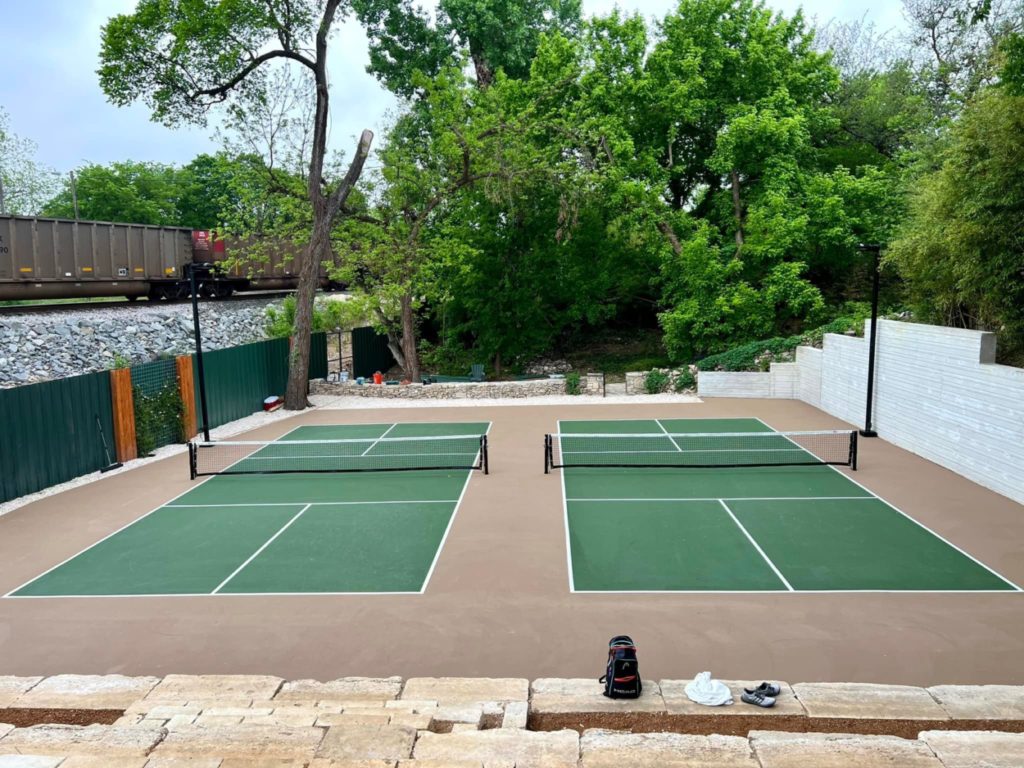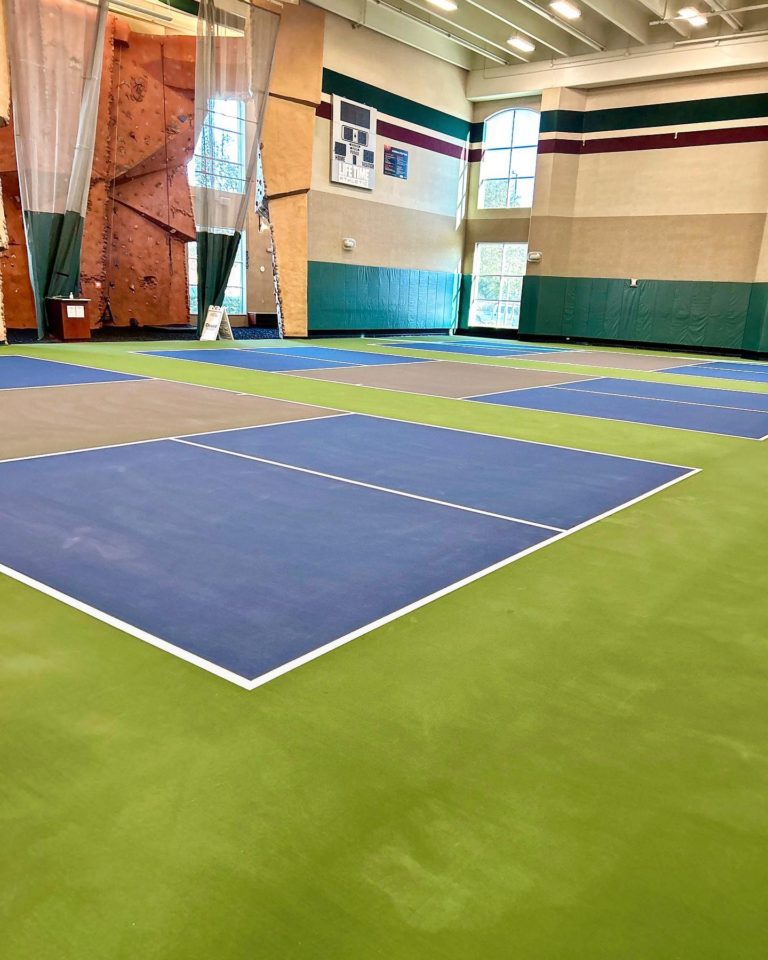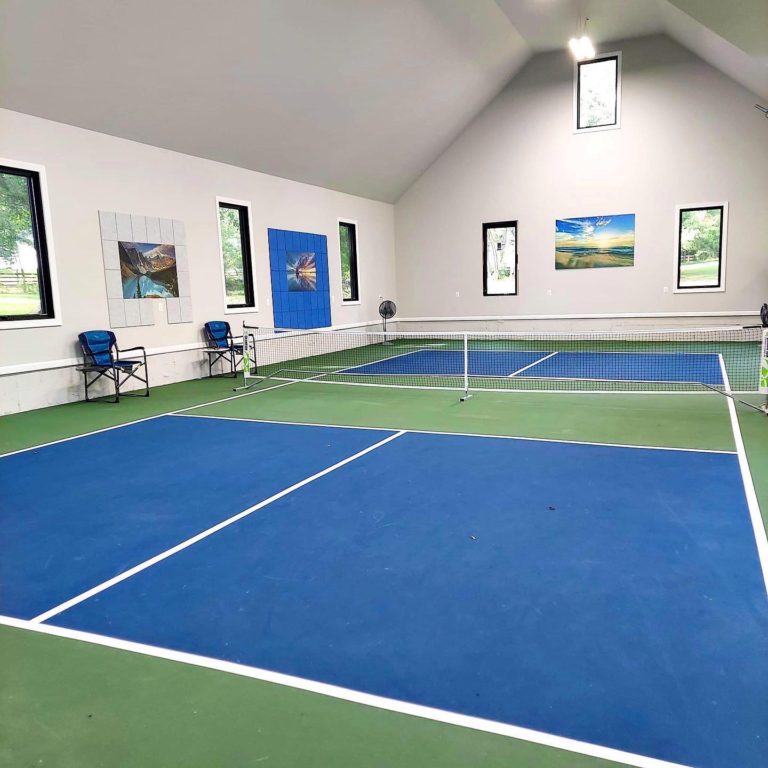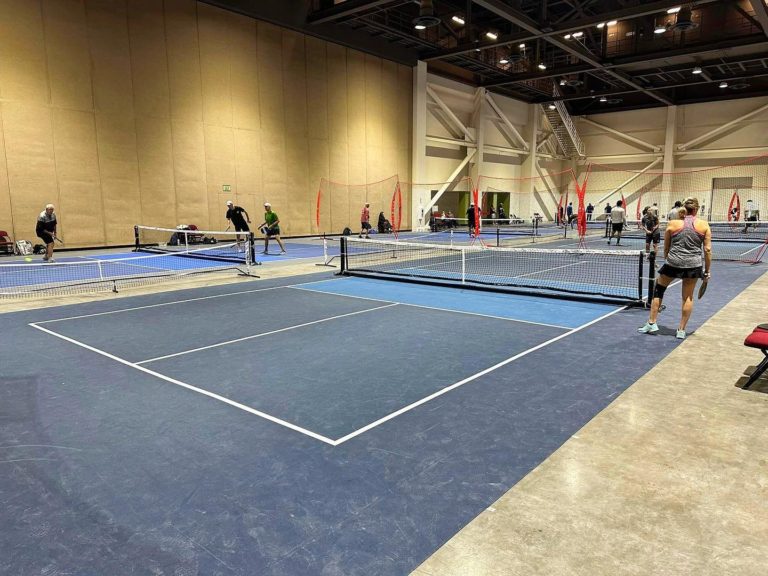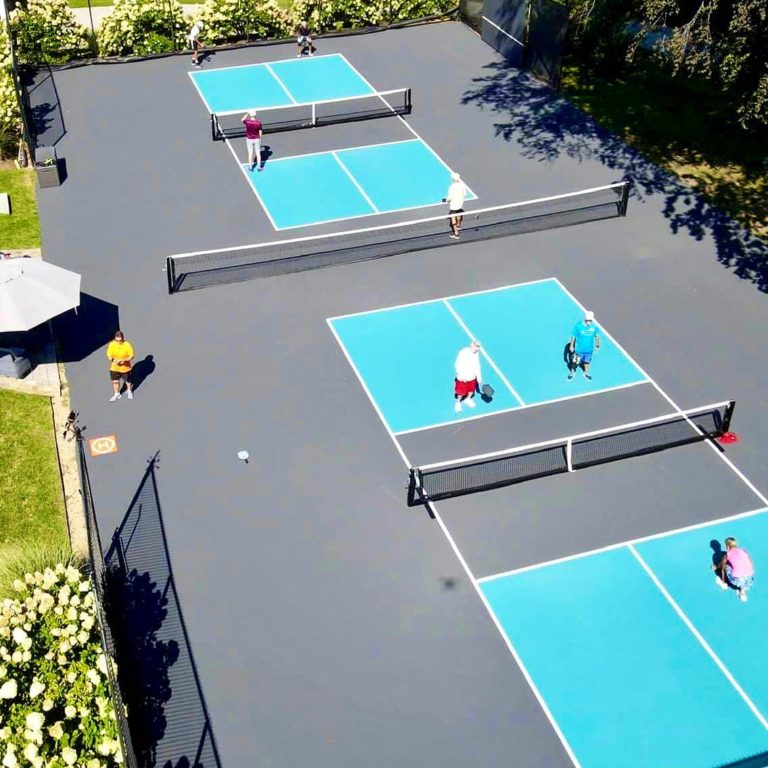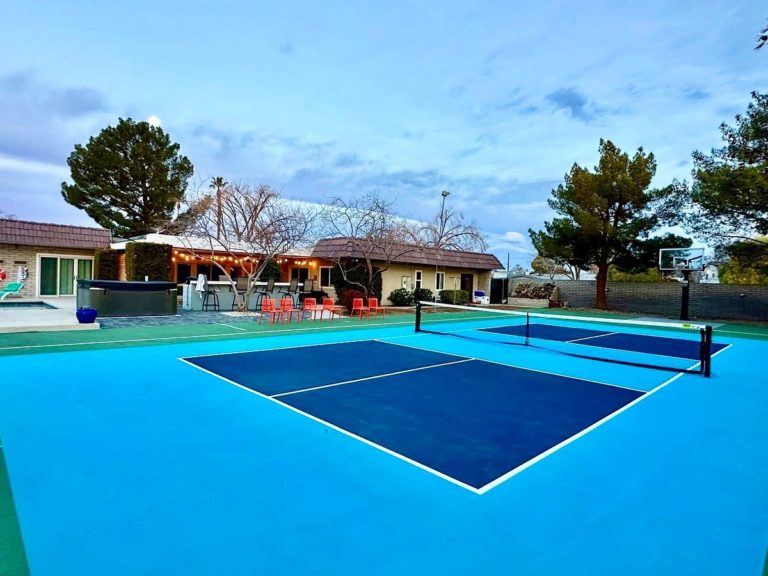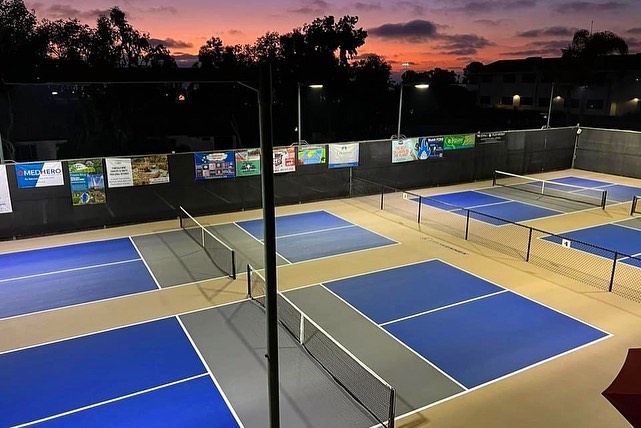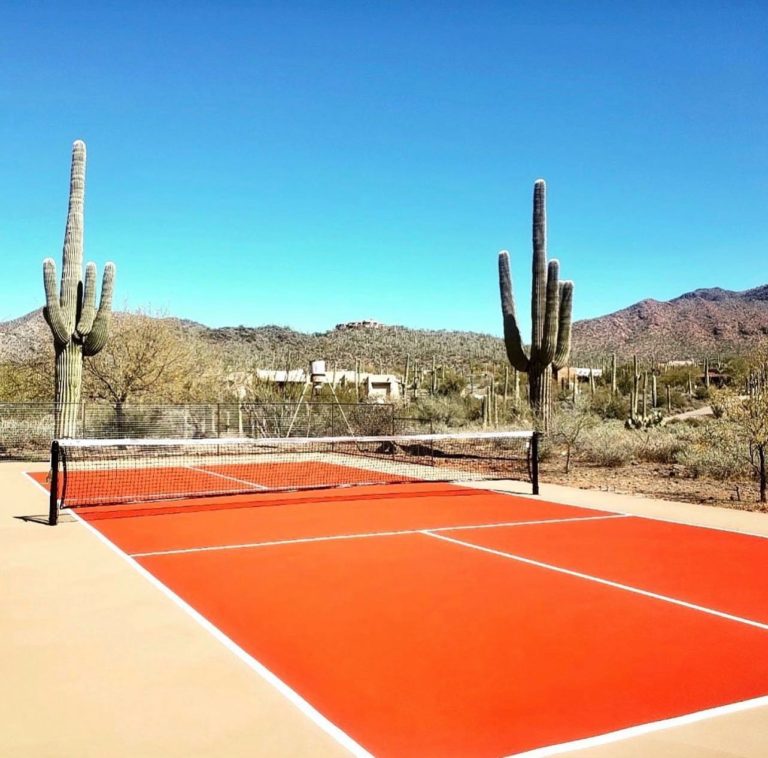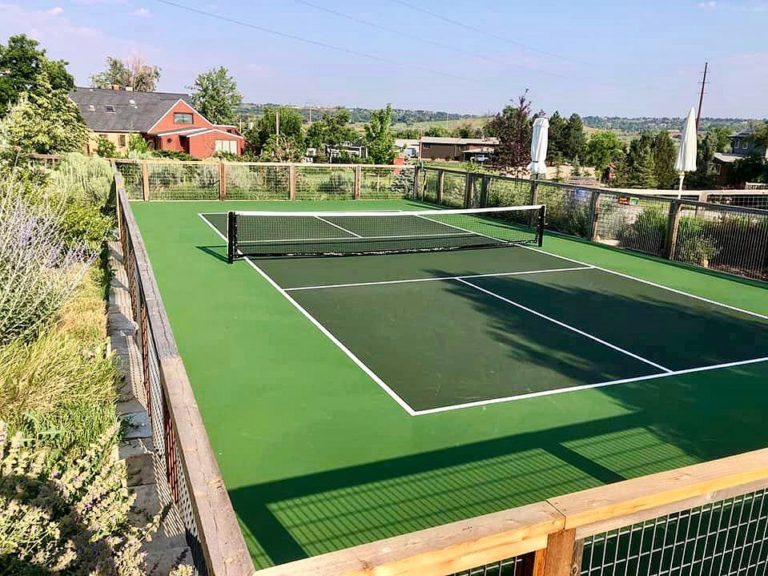With pickleball growing in popularity, more and more people are looking to build their own pickleball courts. Whether you are a pickleball enthusiast, a school, a community center, or a park, building a pickleball court can be a fun and rewarding experience. However, it can also be a challenging and complex process. In this article, we will provide you with a comprehensive guide on how to build a pickleball court and answer many common questions.
Choose the Right Location
The first step in building a pickleball court is to choose the right location. The location of the court is crucial for several reasons. First, it needs to be level and have good drainage to ensure the safety of the players and the longevity of the court. Second, it should have good sunlight exposure for optimal play conditions. Third, it should have adequate space for the court and for spectators.
When choosing the location, consider the following factors:
Accessibility: The court should be easily accessible for players and spectators. It should be located near parking, restrooms, and other amenities.
Proximity to other facilities: The court should be located near other sports facilities, such as tennis courts, basketball courts, or playgrounds.
Safety: The court should be located away from any potential hazards, such as roads, buildings, or trees.
Sun exposure: The court should have good sunlight exposure, especially during the peak hours of play.
Determine the Court Size and Layout
Once you have chosen the right location for your pickleball court, the next step is to determine the size and layout of the court. Pickleball courts are typically 20 feet wide by 44 feet long, with a non-volley zone of 7 feet by 20 feet on either side of the net.
When determining the layout of the court, consider the following factors:
Space: The court should have adequate space for the players and for spectators.
Fencing: The court should have a perimeter fence to keep the ball within the playing area and to provide a barrier for spectators.
Net: The court should have a net that is 34 inches high at the center and 36 inches high at the posts.
Prepare the Court Surface
The surface of the court is one of the most important aspects of building a pickleball court. The surface should be smooth, level, and have good traction. The most common surface for pickleball courts is concrete or asphalt, but some communities are also using sport tiles, which provide a softer surface and can reduce the impact on the players’ joints.
When preparing the surface of the court, consider the following factors:
Levelness: The surface should be level and have good drainage to ensure the safety of the players and the longevity of the court.
Traction: The surface should have good traction to ensure stability and safety for the players.
Maintenance: The surface should be easy to maintain and clean to ensure optimal play conditions.
Install the Court Equipment
The next step in building a pickleball court is to install the court equipment. This includes the net, posts, and lines.
When installing the court equipment, consider the following factors:
Net: The net should be tight and secure, and it should have adjustable tension to ensure it stays in place during play.
Posts: The posts should be sturdy and securely anchored into the ground. They should be adjustable to accommodate different court sizes.
Lines: The lines should be bright and easily visible, and they should be made of durable material that will not fade or deteriorate over time.
maintaining the Court
Once you have built your pickleball court, it is important to maintain it to ensure optimal play conditions and extend its lifespan. The following are some tips for maintaining your court:
Cleanliness: Regularly sweep the court surface to remove debris and dirt. This will also help prolong the life of the surface.
Repairs: Regularly inspect the court for any damage, such as cracks or holes, and make repairs as needed.
Net tension: Adjust the net tension as needed to ensure it stays in place during play.
Surface upkeep: Regularly clean and reseal the surface to maintain its traction and appearance.
How Much Space is Needed for a Pickleball Court?
A pickleball court is 20 feet wide by 44 feet long, with a 7-foot non-volley zone in front of the net known as the “kitchen”. To accommodate this, a total of 34 feet of width and 64 feet of length is needed. When constructing a court, it is important to consider the surrounding area and leave enough space for players to move freely and safely. A recommended distance of 10 feet from the court’s perimeter to any surrounding obstacle (such as a fence or wall) is suggested to ensure adequate space for play.
What is the Best Fence for a Pickleball Court?
The best fence for a pickleball court will depend on the specific needs and requirements of your court. For example, if privacy is a concern, a solid fence may be the best option. On the other hand, if visibility is important, a chain-link fence may be a better choice. Additionally, it is important to consider the durability and maintenance requirements of the fence, as well as any regulations or restrictions in your area.
What Kind of Base is Required for a Pickleball Court?
The base of a pickleball court should be level and provide a stable and uniform surface for play. A concrete surface is the most commonly used base for outdoor pickleball courts, while indoor courts may use a variety of materials such as wood, tile, or sport court surfaces. The base should be smooth and free of any cracks or dips, as these can affect the quality of play.
The base for a pickleball court should be flat, level, and compacted to provide a solid foundation for the playing surface. A combination of crushed rock and gravel is often used as a base material and should be compacted to a minimum depth of 6 inches. Asphalt or concrete can also be used as a base material, however, this requires professional installation and is more expensive.
How Thick Should Concrete be for a Pickleball Court?
The thickness of the concrete for a pickleball court will vary depending on the size of the court and the weight of the surface material used. However, a minimum thickness of 4 inches is recommended for a standard pickleball court.
Does a Pickleball Court Add Value to a Home?
Adding a pickleball court to your home can be a great way to increase the value of your property. A well-built court can serve as a great entertainment space, as well as a valuable asset for anyone looking to sell their home. Additionally, a pickleball court can provide a great source of exercise and recreation for both you and your family.
How Much Would it Cost to Put in a Pickleball Court?
The cost of putting in a pickleball court can vary greatly depending on the materials used and the size of the court. On average, the cost can range anywhere from $5,000 to $25,000 or more, depending on the size of the court, the surface material, and the complexity of the project.
What is the Cheapest Way to Build a Pickleball Court?
Building a pickleball court can be an investment, but there are ways to keep costs low. One option is to build the court yourself, using materials such as asphalt or concrete. This will require some manual labor and may take longer than hiring a contractor, but it can save you money in the long run. Additionally, you can consider using a low-cost surface material, such as sand or gravel, which can be used in combination with a durable paint or coating.
How to Light Up an Outdoor Pickleball Court
Proper lighting is essential for safe and enjoyable pickleball play, especially for evening games. To light up an outdoor pickleball court, it is recommended to use LED lights. LED lights provide bright and efficient lighting with minimal heat emission. The lights should be mounted at a height of 20 to 30 feet, aimed downward, and positioned in a way that minimizes shadows and glare on the court. It is also important to consider the direction of the lights to ensure that they do not interfere with the player’s line of sight.
In terms of the number of lights needed, a good rule of thumb is to use one light per 20 feet of court length. This means that a regulation-sized court would need at least 4 to 6 lights to provide proper illumination. It is also a good idea to install lights that are adjustable or can be dimmed to accommodate different lighting conditions and times of day.
It’s also important to consider electrical safety when installing lights on a pickleball court. Hiring a licensed electrician to handle the installation is recommended to ensure that the lights are installed safely and in accordance with local electrical codes and regulations.
What Kind of Nets are Used on Pickleball Courts?
Pickleball courts use regulation-sized pickleball nets that are typically made of durable mesh material, such as nylon or polyester, and are held up by sturdy posts. The net should have a length of 20 feet and a height of 36 inches in the center. The posts and center strap must also meet specific standards in terms of size, weight, and placement to ensure fair play.
How Can I Fix the Cracks on My Pickleball Court?
Cracks on a pickleball court can be a safety hazard and can affect the playability of the court. To fix cracks, it is important to first determine the cause of the cracking. If the cracks are due to normal wear and tear or weathering, they can be repaired with a crack filler. If the cracks are due to settling or shifting of the base, they may need to be addressed by a professional contractor.
To repair cracks, clean the area around the crack and remove any loose or broken material. Then, fill the crack with a crack filler, such as an asphalt patching compound, and smooth it out with a trowel. Allow the filler to dry completely, then seal the crack with a sealant to prevent further damage. If the cracks are large or if the court surface is severely damaged, it may be necessary to resurface the court. In this case, it is recommended to hire a professional contractor with experience in pickleball court construction and resurfacing.
How Often Should Pickleball Courts be Cleaned?
Pickleball courts should be cleaned regularly to maintain the surface quality and ensure safe and enjoyable play. The frequency of cleaning will depend on several factors, including the type of surface, the amount of use, and the local weather conditions.
For outdoor courts made of asphalt or concrete, a routine cleaning every 2 to 4 weeks is recommended. This can be done by sweeping the court with a broom, removing any debris and leaves, and washing the surface with a mild soap solution and water. If the court is located in an area with high traffic or heavy rainfall, it may need to be cleaned more often.
For indoor courts, a routine cleaning every 1 to 2 weeks is recommended. This should include vacuuming or sweeping the court, removing any debris, and wiping down the surface with a damp cloth. Indoor courts may also need to be cleaned more often if there is heavy usage or if the court is used for multiple activities.
How Should Pickleball Courts be Cleaned?
Pickleball courts should be swept regularly to remove any debris or dirt. They can also be cleaned with a mild detergent solution and a soft-bristled brush to remove any stubborn dirt or stains. It’s important to avoid using harsh chemicals or abrasive materials that could damage the court surface.
Is There Any Difference Between Indoor and Outdoor Pickleball Court Surfaces?
Yes, there is a difference between indoor and outdoor pickleball court surfaces. Outdoor courts typically use a harder surface material to withstand the elements, while indoor courts may use a softer or cushioned surface for improved player comfort. The surface material and conditions can also affect the ball’s behavior and playing style.
What Are the Benefits of Cushioned Pickleball Court Surfaces?
Cushioned pickleball court surfaces provide several benefits, including improved player comfort, reduced impact on joints, and reduced injury risk. The cushioned surface also helps to reduce ball bounce inconsistencies, providing a more consistent playing surface for improved performance.
What Kind of Coating Should be Used to Surface or Paint Pickleball Courts?
There are several different types of coatings that can be used to surface or paint pickleball courts. Some of the most common options include acrylic, urethane, and epoxy. Each type of coating has its own unique properties and benefits, so it is important to consult with a professional contractor to determine which type of coating is best for your specific court. Factors such as weather, usage, and desired surface characteristics should be considered when making a decision.
Acrylic sport coatings are the most commonly used material for surfacing or painting pickleball courts. These coatings provide a smooth and durable surface that can withstand the wear and tear of regular play. Other materials such as latex or epoxy may also be used, but acrylic coatings are typically the most affordable and long-lasting option.
What is the Pickleball Court Resurfacing Process
The resurfacing process involves removing the old surface material and replacing it with a fresh layer. This can include filling in any cracks or gaps and smoothing out any uneven areas. The new surface material can then be applied, followed by the court lines and other markings.
What are the Best Color Combinations for Pickleball Court Surfaces?
The color combination of a pickleball court can greatly impact its appearance and overall aesthetic. Some of the most popular color combinations for pickleball courts include green and tan, blue and green, and green and red. It is important to choose colors that provide high contrast, making it easier for players to see the ball during play. The specific colors used should also be in compliance with local regulations and standards for pickleball court construction.
Where Can I Find Experienced Pickleball Court Contractors for Court Construction and Surfacing?
Local sporting goods stores, online directories, and pickleball organizations are great places to start your search for experienced pickleball court contractors. You can also ask other players for recommendations, or reach out to the USAPA (USA Pickleball Association) for a list of approved contractors.

